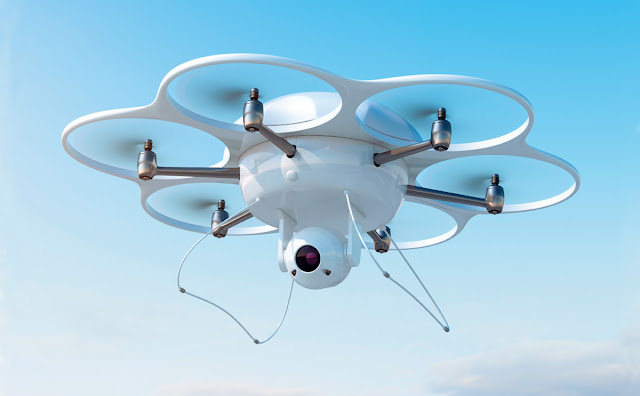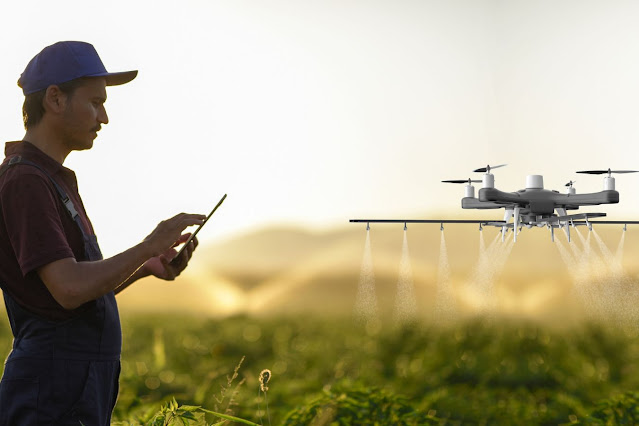Drones assist photo enthusiasts expand their horizons since the "bird's eye" perspective enables you to take excellent pictures of typical photography subjects.
Drones of all kinds are widely available on the electronic market, and the following factors are crucial to consider before buying one:
several categories
The first three categories of drones—C0, C1, and C2—are quite compatible with the needs of photography enthusiasts. There are different drone categories available from C0 to C6.
In some States, drones in the C0-class—which weigh less than 250 grams—can be operated without a permit.
The German technology portal Ship D's Margate Hofgartner stated that "low-cost drones include built-in cameras, but image quality is unsatisfactory, as well as flight difficulties, as the low weight of the drone causes instability, and weak image stabilizers cannot fully equate vibrations."
In contrast, drones priced between $500 and $2,000 produce excellent photographic outcomes while taking pictures and making films.
"For aspiring photography fans with a lens-changing camera, they have to spend more money and buy a drone for at least $500," Hufgartner continued.
Marcus Linden, a photographer who writes for Photo Invaders and Digital Photo, said that amateurs utilizing drones may get by with inexpensive models that cost $350 and weigh less than 250 grams.
A license is required to fly drones weighing greater than 250 grams and up to 500 grams.
A user needs an operating licence for large drones (E2/A2), which can only be obtained from external accredited test centers, if the drone weighs more than 2 kilos and flies fewer than 150 meters over people, buildings, industrial sites, and recreational areas.
Good image stabilizer
When purchasing a drone, the user must verify the presence of a good Gimbal 3-axis image stabilizer to keep the camera stable.
Hofgartner explains that "some drones, with price categories starting at $1,000, include many cameras to capture better images in the near and medium range".
Large image sensor
The drone camera better have a large image sensor with at least 20 megapixla resolution, as well as a video recording function with 4 thousands accuracy.
There are many drones in the price category from $550 to $2200 that bear the trademark of "DJ and Hepsan" companies, and Parot Winick's production is limited to professional models of drones.
Linden noted that there were significant differences between the sensors used in drones, explaining that "the more expensive the drone is, the better the sensor is, and most low-cost drones include small sensors (2/1.3) such as those used in many smartphones."
Although the quality of imaging these sensors is sufficient for the user's needs in many uses, when desiring better imaging results, it is preferable to rely on one inch sensor; Large sensors provide better imaging quality, especially under poor lighting conditions.
Storage Photos
The photography expert Linden added that the possibility of storing images as "DNG" data helps the photographer under poor light conditions or in the case of high variability or excessively light-prone ranges, which often appear in aerial photography.
The German expert said: "Images with ROE format can be edited more accurately and well compared to JPG format."
Panorama and Tracking
The user, who wishes to purchase the drone, has to take into account that the camera provides panorama shooting mode and tracking function, which means that people and moving objects can be automatically tracked while recording videos, as well as the need for obstacle prediction sensors and "auto-back" function.
Duration of flight
Before purchasing the drone, the user must know the flight time provided by the battery. Hofgartner points out that "the longer the drone flies, the more time the photographers have to search for a suitable photography subject and image composition".
The battery run period for most models extends from 20 to 30 minutes to fly, so it is best to plan to buy a second battery when buying a drone.
Noting that the maximum speed of drones is not an important factor in procurement, Hofgartner said that "most drones fly at 50 km/s, which is enough speed for most fans of photography, but slow flight mode is more important in order to capture images and record videos with better quality".




Comments
Post a Comment